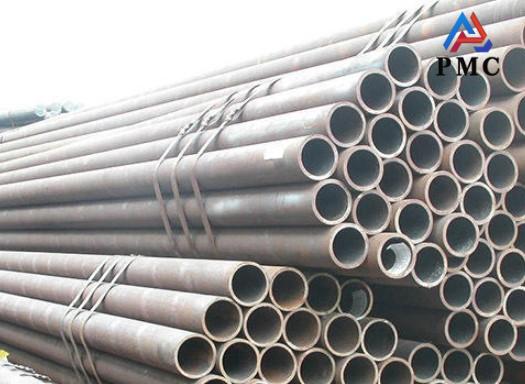
Seamless Steel Pipe Price
Are there significant price differences between seamless steel pipes made of different materials? The answer is yes. The price differences between seamless steel pipes made of different materials are quite significant. This difference is primarily due to differences in raw material costs, manufacturing processes, and performance characteristics. Below is a careful summary of the price differences between seamless steel pipes made of different materials.
Seamless carbon steel pipe
This is the most common and widely used seamless steel pipe, and also the cheapest type. Its main components are iron and carbon, with no or only small amounts of other alloying elements.
Price range: Relatively low, often used as a benchmark for prices of other steel pipe materials.
Alloy steel seamless pipe
This type of steel pipe adds alloy elements such as chromium, molybdenum, and vanadium to carbon steel to improve its performance in high temperature, high pressure, and low temperature environments. The cost of alloy elements is higher and the manufacturing process is more complicated.
Price range: significantly higher than carbon steel pipes, usually ranging from 1.5 to 3 times that of carbon steel pipes, depending on the content of alloy elements.
Stainless steel seamless pipe
Stainless steel contains a large amount of chromium (Cr) and nickel (Ni), which are metal elements that are much more expensive than iron, and are used to provide excellent corrosion resistance. Therefore, the price of stainless steel seamless pipes is much higher than that of carbon steel and ordinary alloy steel.
304/304L stainless steel: contains about 18% chromium and 8% nickel, and is the most widely used stainless steel grade.
316/316L stainless steel: About 2% molybdenum (Mo) is added to 304 to enhance its corrosion resistance in chloride environments. Molybdenum is an expensive rare metal, so the price of 316 stainless steel is higher than 304.
Price range: Stainless steel seamless pipes have the highest price, usually 3 to 10 times that of carbon steel pipes, or even higher.

The main source of price differences for seamless steel pipes of different materials
Raw Material Costs
20# billet ≈ 4,200 yuan/ton; 316L billet ≈ 20,000 yuan/ton; nickel-based alloy billet ≥ 100,000 yuan/ton.
Smelting/Rolling Difficulty
Alloys and stainless steel require vacuum degassing and secondary refining, resulting in a low yield of 5-15%.
Heat Treatment Process
Nickel-based alloys require multiple solid solution and aging steps, consuming 3-5 times more energy than conventional normalizing.
Market Capacity and Inventory
Nickel-based and duplex steels have low annual demand, leading to long production cycles at steel mills and high spot premiums.
Purchasing tips
When purchasing seamless pipes, buyers should closely monitor market trends, particularly raw material price trends and fluctuations in market supply and demand. In a volatile market, it's important to plan purchases appropriately and avoid purchasing large quantities when prices are high. Furthermore, factors such as the specifications, quality, and production process of seamless pipes should be comprehensively considered, rather than relying solely on price. Establishing long-term, stable relationships with reliable suppliers can also help secure more reasonable prices and superior service, ensuring that the seamless pipes purchased meet production needs while effectively controlling costs.
Read more: What Factors will Affect the Price of Seamless Pipes in 2025?
- 【Prev】 : Seamless Carbon Steel Pipe Warranty Period
- 【Next】 : Steel Casing Pipe Standard


